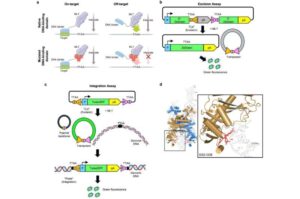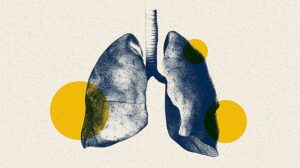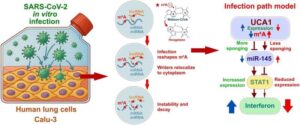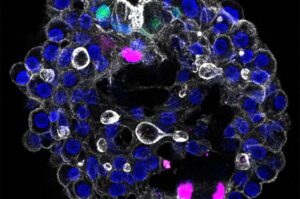MedTech News

Gene therapy advances as scientists guide jumping DNA to target faulty genes
Their next target is to use this technology in CAR T-cell immunotherapy, which reprograms the immune system to hunt and destroy cancer cells.

‘Molecular glue’ stabilizes protein that inhibits development of non-small cell lung cancer
Lung cancer is the second-most common cancer and the leading cause of cancer death in the United States. Over 80% of lung cancers are non-small cell lung cancers, in which tumor cells are larger and grow more slowly than those in small cell lung cancer.

COVID-19 virus manipulates host cell RNA to shut down the immune system, study reveals
Researchers at the Federal University of São Paulo (UNIFESP) in Brazil have discovered that SARS-CoV-2, the virus that causes COVID-19, uses a sophisticated tactic to evade the human body’s defense system

Patient-specific human liver model lays foundation for personalized treatments
Liver disease is a major global health problem, causing over two million deaths worldwide each year. While animal models have helped to understand liver biology, they often fail to accurately translate to human biology.

Astrocytes found to aid spinal cord repair by signaling immune response
Cedars-Sinai investigators have discovered a healing mechanism that could one day be harnessed to help treat patients with spinal cord injuries, stroke, and neurological conditions such as multiple sclerosis. Their study, published in Nature, describes a previously unknown function of astrocytes, a type of cell in the central nervous system.

Engineered dendritic cells boost cancer immunotherapy
EPFL researchers have successfully engineered cells of the immune system to more effectively recognize cancer cells. The work, covered in two papers, turns the previously lab-based method into a full-blown immunotherapy strategy.

New study suggests a way to rejuvenate the immune system
Stimulating the liver to produce some of the signals of the thymus can reverse age-related declines in T-cell populations and enhance response to vaccination.

CMR Surgical gains FDA clearance for new robot
CMR gained FDA marketing authorization for its first-generation Versius robot in October 2024 through the de novo pathway. In April, the company said it raised more than $200 million to support the commercialization of Versius.
